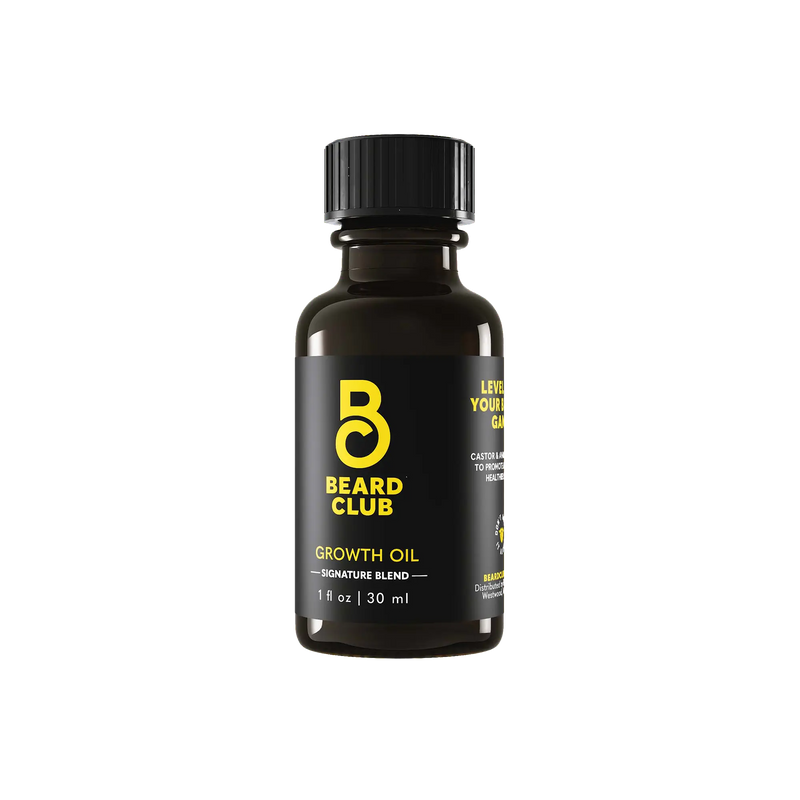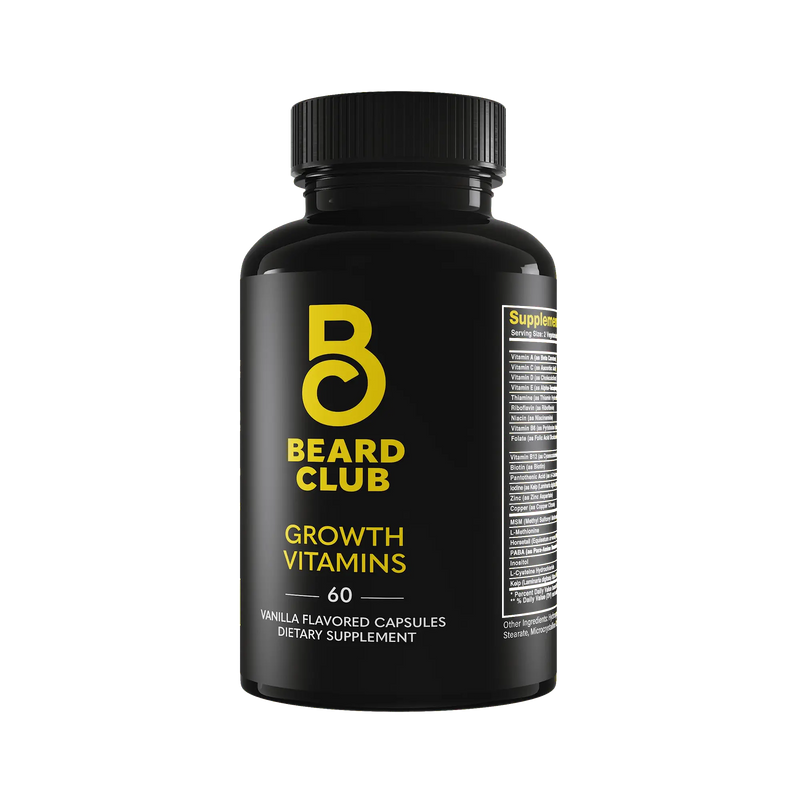Blonde Facial Hair: Why Is My Mustache and Beard Hair Blonde?
Have you ever looked in the mirror and wondered why your facial hair looks like it’s been sunbathing? At The Beard Club, we know blonde facial hair has a way of standing out — especially if the hair on your head isn’t blonde.
Figuring out why your facial hair turned blonde (or started that way) can be confusing. Is it a genetic surprise that your ancestors left behind? Or is it something that’s in your control? In this article, we’ll break it all down.
Why Is My Facial Hair Blonde?
Think you know what blonde facial hair is? It’s not the scraggly peach fuzz you had in middle school, and it’s not that patchy attempt at a beard you rocked freshman year of college.
Blonde facial hair is the real deal. It ranges from dirty blonde or golden to light enough to be almost invisible. Sometimes, it’s just a sprinkling in an otherwise darker beard. Other times, it takes over your entire face. You might even discover that what you thought was blonde facial hair is really a sprig of a ginger beard!
Whatever the color of your facial hair, it happens for a reason:
Genetics
Genetics play a major role in your beard growth and hair color. Melanin is what determines hair color, and your facial hair may have a different balance than the hair on your head. The two types of melanin are eumelanin (dark pigment) and pheomelanin (light pigment). If pheomelanin is running the show on your face, your beard will lean blonde.
Hormonal Balance
Additionally, hormones can influence hair growth and even its shade. Blonde hair doesn’t mean your hormones are off balance or something you should worry about — just that they’re uniquely yours. It’s a flex that keeps everyone guessing!
Early Growth
When your beard first starts coming in, it might come in lighter, finer, and softer than you expect. That’s because your hair follicles are still figuring out how to do their job, and your pigmentation might not be firing on all cylinders just yet.
Consider it a preview. During early growth, facial hair is light. Over time, as your beard matures, the hair can thicken and darken. For some, that early blonde sticks around, even as others see a shift to a deeper hue.
Aging
As you age, the color of your facial hair can naturally lighten or take on a blonde or grayish hue. This happens because melanin — that pigment we talked about before — decreases over time.
Sometimes, facial hair doesn’t follow the same pattern as the hair on your head. You might notice patches of lighter or blonde strands in your beard or mustache before seeing similar changes elsewhere.
UV Rays
Finally, sunlight can play a surprising role in the color of your facial hair, especially if you already have lighter hair. UV rays from the sun can naturally bleach hair, making it appear even lighter or giving it a blonde tint over time.
Lighter facial hair, like blonde or red strands, tends to reflect sunlight differently, which can make it look paler in direct exposure. That’s why your mustache or beard might seem brighter during sunnier months or after spending a lot of time outdoors.
Can Blonde Facial Hair Change Color Over Time?
It sure can! Remember those hormones we talked about? They’re not done with you yet.
As your beard grows and matures, it might throw you a curveball and switch up its color. That sunlit blonde could deepen into a darker shade, pick up hints of red, or even make a mix that looks like it was painted by a Renaissance artist.
Time and age have a say in things, too. As your testosterone levels find their groove, your beard might darken naturally. Conversely, if you’re soaking up the sun like a Greek god, those UV rays could keep your beard sporting sunny highlights.
Basically, your beard’s got layers — literally. Whether it changes or stays blonde forever, it’s all part of the charm. Whatever happens, your beard is sure to be as unique as the guy who rocks it.
What To Expect if Your Facial Hair Stays Blonde
If your facial hair decides to stick to its golden roots, you’re in for a sweet ride. Blonde beards have a way of standing out in a sea of dark, brooding bristles. They’re bold, unique, and just plain cool.
That said, keeping a blonde beard looking its best takes a little extra effort. Blonde hair tends to be finer and can more easily show dirt or dryness. That means your grooming routine is your best friend.
Regular washing with a proper beard shampoo, hydrating with beard oil, and a beard brush to keep it neat are non-negotiable.

Can You Darken a Blonde Beard?
Are you thinking about taking your beard from sunshine blonde to a darker shade? The good news is that you have plenty of options.
No matter if you’re looking for a subtle change or a more noticeable shift, there are methods for achieving a darker tone:
Beard Dye
Dyeing your beard is a proven method to make light facial hair look darker.
The amount of time that beard dye lasts can depend on the type and ingredients, but permanent dye often lasts as long as six weeks. Temporary beard dyes are also available for a fun way to explore and mix up your look without the permanency.
Beard Oils With Pigmented Ingredients
Look for oils infused with natural ingredients like coffee, walnuts, or henna. These can naturally add a slight tint to your beard over time while keeping it hydrated and healthy.
Dietary Changes
Pump up your intake of foods rich in vitamins and minerals that promote melanin production, like eggs, carrots, and leafy greens. A better diet can support overall hair health and maybe deepen your beard color along the way.
Coffee or Tea Rinses
Yes, your morning brew can be your beard’s ultimate wingman. Coffee or tea rinses can subtly darken your beard with repeated use, giving it a richer tone over time.
UV Exposure
While too much sun can lighten your beard, a moderate amount can deepen your blonde tones into warmer hues. Balance is key — you’re not trying to roast your face!
Beard Supplements
Natural beard growth supplements packed with biotin and other hair-friendly nutrients can give your facial hair the help it needs to thicken and darken.
Not sure where to start? Check out our beard growth vitamins for everything your facial hair craves.

How To Embrace Blonde Facial Hair
Blonde facial hair is like a rare whiskey — it’s not for everyone, and that’s exactly why it’s awesome.
While most guys are busy trying to blend in with the dark scruff of the masses, your golden beard will stand out in the best way possible.
Blonde beards have a rugged, sunlit charm that screams effortless cool. They don’t just look great — they have an edge you can’t ignore.
What’s the secret ingredient? Confidence. Groom it, own it, and let it shine. Whether it’s a subtle mustache or a full-on beard, your blonde facial hair is part of what makes you, well, you. Wear it like you mean it.
Rock Your Look With The Beard Club
Why is your mustache and beard hair blonde? It’s all about genetics, melanin, and your unique beard DNA. From a flaxen mane to a sunlit mustache, blonde facial hair isn’t just normal — it’s epic.
At The Beard Club, we’re here to help you rock your look, no matter the shade. Blonde, dark, or somewhere in between, the key is keeping it groomed, healthy, and undeniably you. Check out our lineup of beard care essentials to keep your golden locks looking their absolute best.
Sources:
Is hair color determined by genetics? | Medline Plus
Hormonal Effects on Hair Follicles | PMC
Vitamins, minerals, and hair loss: Is there a connection? | Harvard Health


















